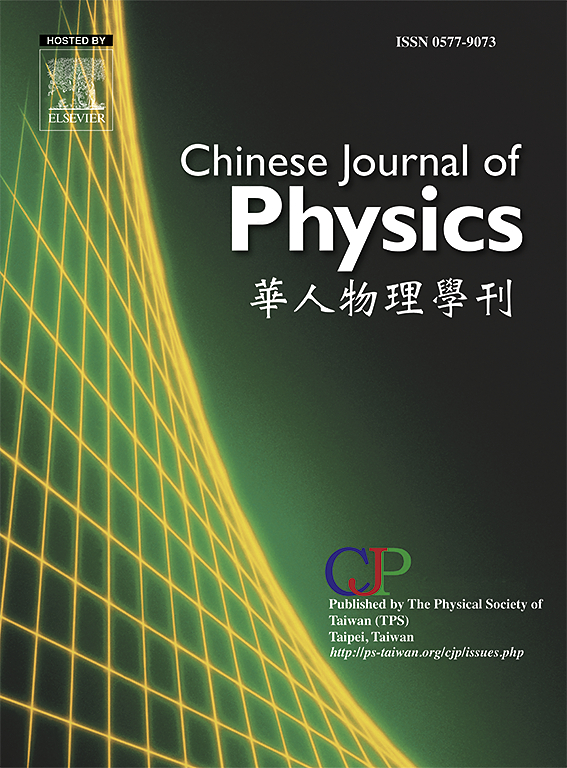Transient free convective flow of viscoelastic nanofluids governed by fractional integrodifferential equations under Newtonian heating and thermal radiation
IF 4.6
2区 物理与天体物理
Q1 PHYSICS, MULTIDISCIPLINARY
引用次数: 0
Abstract
The transient free convective flow of incompressible nanofluids past a vertical infinite plate with mass diffusion and Newtonian heating is investigated under the influence of thermal radiation. The fractional integrodifferential governing equations are first formulated from the generalized Maxwell constitutive relationship with dual fractional-order parameters. Some important physical quantities relevant to engineering, including the modified skin friction factor, Nusselt number, and Sherwood number, which are suitable for nanofluids, are also deduced. Then the dimensionless boundary layer equations of momentum, energy and concentration subject to the appropriate initial and boundary constraints, are solved numerically using the L1 formula and weighted-shifted Grünwald–Letnikov scheme. Some numerical illustrations are provided to demonstrate the impact of the key variables on the momentum, heat and mass transport properties for different nanofluids. The simulation findings reveal that both increasing the velocity fractional-order derivative parameter and decreasing the fractional-order integral parameter lead to a thicker momentum boundary layer. The inclusion of nanoparticles enhances fluid heat transfer performance. This study offers significant insight into the applicability of the fractional-order integrodifferential equations for characterizing the momentum, heat and mass transport properties of nanofluids.

求助全文
约1分钟内获得全文
求助全文
来源期刊

Chinese Journal of Physics
物理-物理:综合
CiteScore
8.50
自引率
10.00%
发文量
361
审稿时长
44 days
期刊介绍:
The Chinese Journal of Physics publishes important advances in various branches in physics, including statistical and biophysical physics, condensed matter physics, atomic/molecular physics, optics, particle physics and nuclear physics.
The editors welcome manuscripts on:
-General Physics: Statistical and Quantum Mechanics, etc.-
Gravitation and Astrophysics-
Elementary Particles and Fields-
Nuclear Physics-
Atomic, Molecular, and Optical Physics-
Quantum Information and Quantum Computation-
Fluid Dynamics, Nonlinear Dynamics, Chaos, and Complex Networks-
Plasma and Beam Physics-
Condensed Matter: Structure, etc.-
Condensed Matter: Electronic Properties, etc.-
Polymer, Soft Matter, Biological, and Interdisciplinary Physics.
CJP publishes regular research papers, feature articles and review papers.
 求助内容:
求助内容: 应助结果提醒方式:
应助结果提醒方式:


